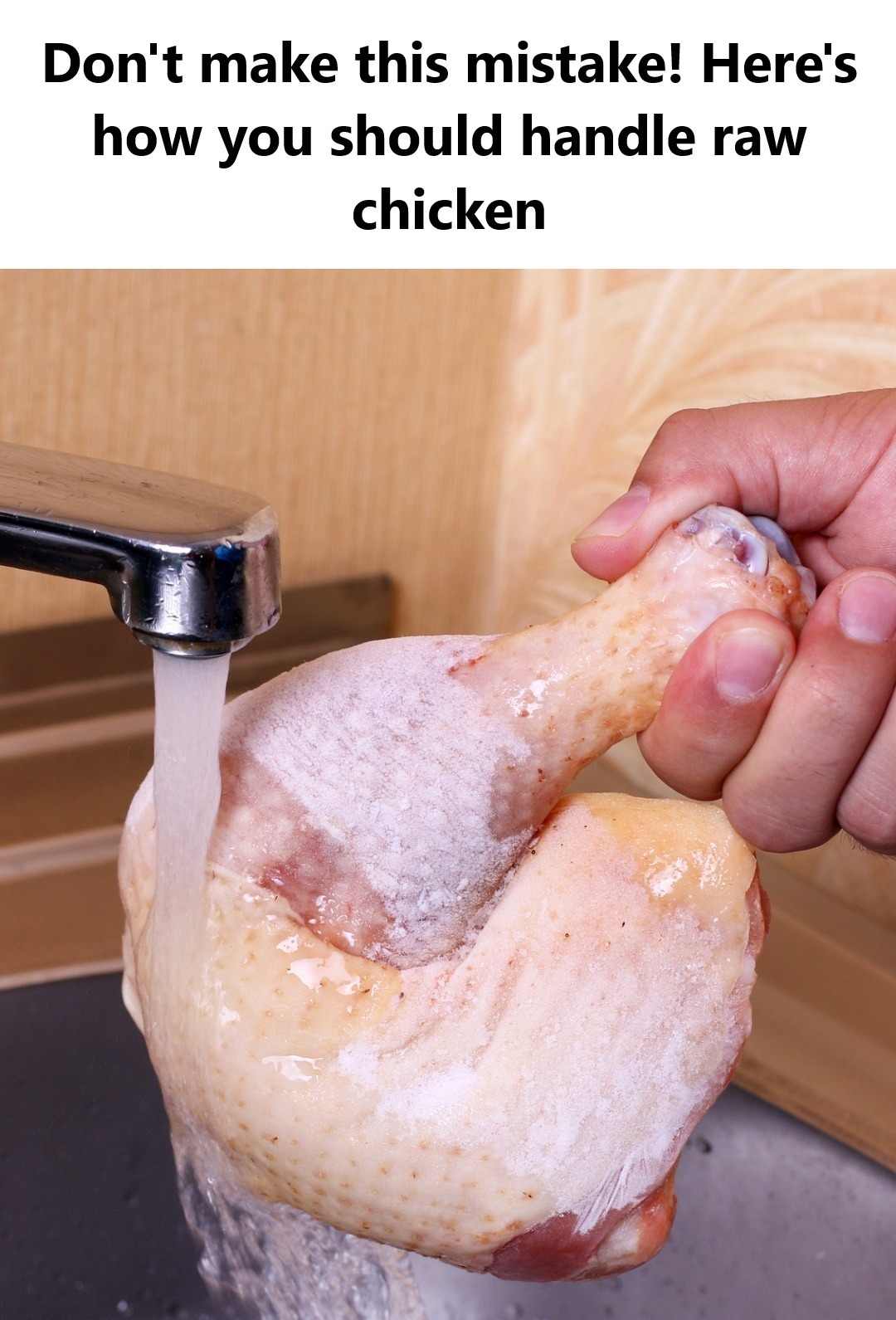ADVERTISEMENT
Why Washing Raw Chicken is a Bad Idea: Understanding the Risks and Safer Alternatives
When preparing chicken for dinner, it’s natural to want to wash it first. Many of us were taught to rinse raw chicken under cold water to remove any residual blood, bits of feathers, or other impurities. However, this common kitchen habit could actually be dangerous and increase the risk of foodborne illness. In fact, experts strongly advise against washing raw chicken.
In this article, we’ll explore the reasons why washing raw chicken is a bad idea, what risks it poses, and safer alternatives to ensure your chicken is safe and delicious.
🦠 The Dangers of Washing Raw Chicken
When you wash raw chicken under running water, the bacteria that are naturally present on the surface of the chicken can spread to other areas of your kitchen. This may include countertops, utensils, and even your clothes. Some of the most common and harmful bacteria found on raw chicken include:
- Salmonella
- Campylobacter
- Clostridium perfringens
These bacteria are responsible for a large number of foodborne illnesses, with symptoms such as nausea, vomiting, diarrhea, stomach cramps, and fever. In some cases, these infections can lead to serious complications, especially for vulnerable groups such as young children, the elderly, pregnant women, and individuals with weakened immune systems.
How Does Washing Chicken Spread Bacteria?
When you rinse raw chicken, the water can splash and spread tiny droplets of bacteria over a wide area. These droplets can land on surfaces, such as:
- Cutting boards
- Knives
- Sink faucets
- Dish towels
- Countertops
Even if you don’t see it, bacteria can be transferred to these surfaces, increasing the chances of cross-contamination. Once bacteria are introduced to other areas of the kitchen, they can easily spread to other foods you are preparing, leading to potential foodborne illnesses.
💡 Why Washing Chicken Doesn’t Help
While washing raw chicken might seem like a way to clean it, in reality, it doesn’t remove bacteria effectively. The bacteria on raw chicken are typically tightly adhered to the meat. Simply rinsing the chicken under water isn’t enough to eliminate the microorganisms that could cause illness.
Instead of removing bacteria, the act of washing only spreads it around your kitchen. Plus, cooking chicken properly is the most effective way to kill harmful bacteria, not washing it beforehand.
🔥 Cooking Chicken Properly is Key
To kill harmful bacteria and ensure your chicken is safe to eat, proper cooking is essential. The USDA recommends cooking chicken to an internal temperature of 165°F (74°C). Using a meat thermometer is the most reliable way to confirm that the chicken has reached a safe temperature.
Once the chicken reaches 165°F, all harmful bacteria, including Salmonella and Campylobacter, will be killed, making the chicken safe to eat. Cooking the chicken thoroughly is the best defense against foodborne illnesses, far more effective than washing.
🧼 Safer Alternatives to Washing Chicken
While washing raw chicken is not recommended, there are a few simple steps you can take to ensure your kitchen stays safe when handling raw poultry.
1. Use Safe Handling Practices
Instead of rinsing your chicken, follow these safe handling guidelines to reduce the risk of contamination:
- Wash your hands thoroughly with soap and water before and after handling raw chicken.
- Use separate cutting boards for raw meat and other foods like fruits and vegetables. If possible, have a designated cutting board for raw poultry.
- Avoid cross-contamination by not using the same utensils (knives, tongs, etc.) for raw meat and cooked food unless they’ve been properly cleaned.
2. Clean Your Kitchen Thoroughly
If you do handle raw chicken in the kitchen, it’s essential to clean surfaces immediately afterward:
- Disinfect countertops and cutting boards with an antibacterial cleaner or a mixture of water and bleach.
- Wash your utensils, dishes, and knives with hot soapy water to eliminate any bacteria that may have been transferred.
